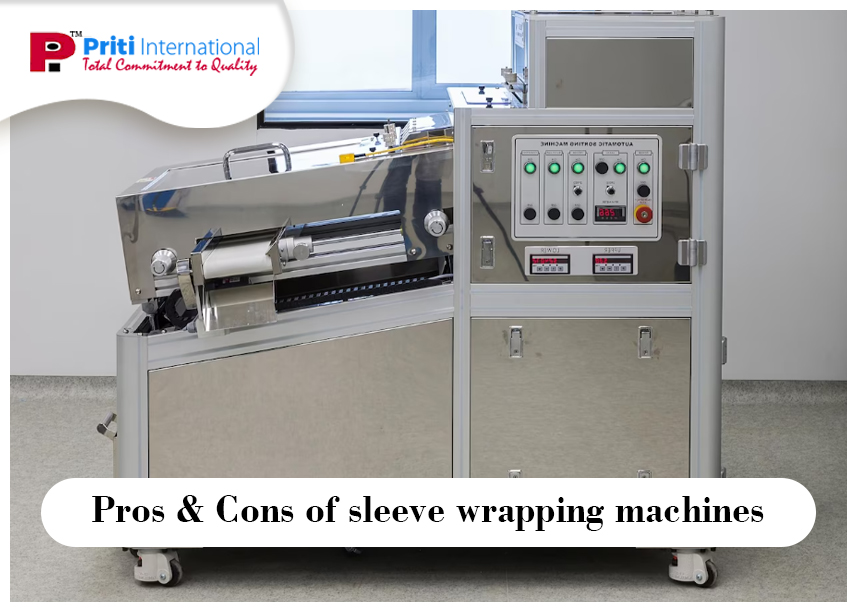In this blog, we will explore the differences between fully sleeve wrapper and semi-automatic machines. This will help you determine which option is best for your needs.
The process of sleeve wrapping involves applying a sleeve film around a pallet load in order to secure and protect it for transport. There are two main types of sleeve wrapping machines – semi-automatic and fully automatic.
Semi-Automatic sleeve Wrapping Machines
The semi-automatic sleeve wrapper machine requires an operator to manually place the pallet loads on the machine. He needs to apply the film tail to initiate the wrapping cycle. An operator must be present properly and safely running these machines. Despite this, it is an automated machine and may even include an automatic film-cutting device. These machines find use in low-volume applications, with fewer than 20 loads wrapped per hour.
Advantages
- Cost: Semi-automatic sleeve wrapping machines are generally less expensive than fully automatic machines.
- Flexibility: An operator helps to run these machines, providing an opportunity to adjust the wrapping process for special loads manually.
Disadvantages
- Labor-intensive: Despite the machine’s near-complete automation, the presence of an operator makes the process more labor-intensive. You can understand this when you compare it with a fully automatic option.
- Limited Wrapping Capacity: With a maximum wrapping capacity of 20 loads per hour, semi-automatic machines may not be suitable for high-volume applications.
Fully Automatic Sleeve Wrapping Machines
Fully automatic sleeve wrapper machines do not require an operator to be present during the wrapping process. These machines are easy for a single person to operate. Moreover these can wrap large pallet loads without any manual intervention.
Advantages
- High Wrapping Capacity: Fully automatic machines have a much higher wrapping capacity, making them suitable for high-volume applications.
- Labour Savings: The absence of an operator during the wrapping process results in a significant reduction in labour costs.
- Consistent Wrapping: With no manual intervention required, fully automatic machines provide a consistent and uniform wrapping process.
Disadvantages
- Cost: Fully automatic sleeve wrapping machines are more expensive than semi-automatic options.
- Less Flexible: The absence of an operator during the wrapping process limits the opportunity for manual adjustments needed for special loads.
Conclusion
The choice between a semi-automatic and fully automatic sleeve wrapping machine will depend on the specific needs of your business. If you have a low volume of loads to wrap and prefer the flexibility of manual intervention, a semi-automatic machine is the best option. However, if you have a high volume of loads to wrap and prefer the labour savings provided by a fully automatic machine.
To purchase a high-quality semi-automatic &  fully automatic sleeve wrapper Service, contact Priti International, the best manufacturer in town. 

